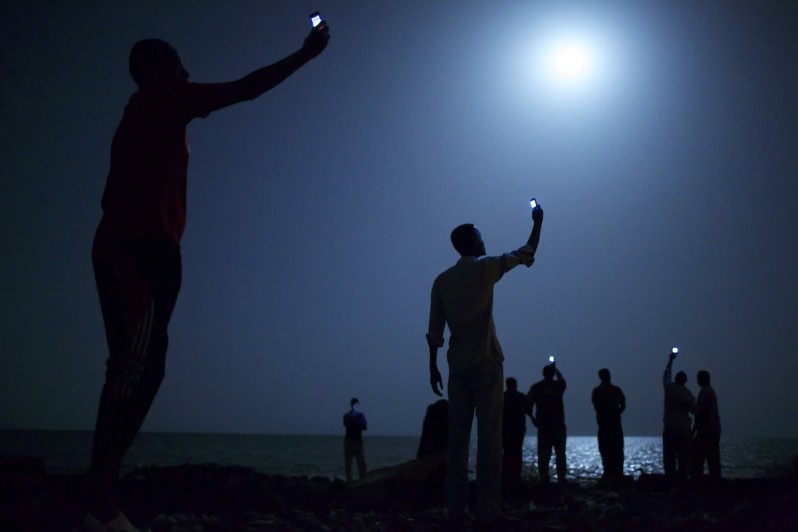One of the stories in my latest project - The Monopoly of Legitimate Use - concerns a bumper. Border bumping is the act of using network technologies to ‘digitally migrate’ yourself into another country or political territory.
One of the immediate real-world comparisons myself and others have drawn is to 2013’s World Press Photo – Signal – taken by John Stanmeyer in which people who they call ‘catchers’ (I still prefer ‘bumpers’) who are largely Somali migrants in Djibouti city hold up their phones to try and latch on the cheaper Somali cell networks in the neighbouring country.
I must confess to having little understanding of photography. I don’t consider myself to have a strong grasp on either the aesthetics or the technical aspects and only see the photograph in terms of the critical content of the image. Unlike the work by Martin Parr I saw at the Science Museum recently, I wasn’t deeply moved by Signal but I recognise its significance as a critical artefact.
It’s a great photograph because it manages to visually encapsulate the invisible. The political and technical boundaries that are out of sight and yet layered over the physical geographies of the Earth. The catchers or bumpers in the image and the physical action they perform of standing by the sea holding up their phones is a potent symbol of where control and power lies.
More and more often in journalism we see devices as the physical door to a larger system rather than simply a gadget. In times of political change this becomes magnified and possesses an even greater symbolism. Another good point of reference here were the early protests in Ukraine where protestors held up their phones in pride at having been sent targeted text messages by the government telling them to disperse.
It’s easy for us as wealthy Europeans to accept much of the technological rhetoric around the liberating power of technology without really realising it. In reality we early adopters are the first victims of the traps that technology has built into it: We don’t understand how or why our devices work and are inherently wary of finding out for fear of invalidating warranties or endangering our reliance on it.
The kind of places where network technologies become liberating is in the kind of places where the cultural structures and power relationships have not yet been set up to give it a prescribed role. Places like Djibouti and Somalia, places and uses that could prove inspirational to us in imagining alternatives.
Journalistic photography has an incredible power, particularly at a time when the medium through which these images arrive often don’t allow for many words. The story of Djibouti is not one that is center-stage and I myself, when referencing it have often confused the exact location and relationship of the geographies involved. I find the photo significant not because it tells the story of a specific geographic region but because it tells a wider story about our relationship to power and the tools we use in leveraging that relationship.
Where often great press photos speak of death, destruction and terror, this photo speaks of a grim, moonlit hopefulness. Of a turn away from physical conflict and on to one that can be controlled on an individual’s terms. These ‘catchers’ migrate every night to Somalia without confrontation by border guards or state mechanisms. As someone who studies this area deeply, this photograph gives me and others a visual tool to begin thinking about how these new forms of power manifest. The significance of its selection as World Press Photo shows a recognition of how we need to look at the invisible conflicts that are happening around us.
–
Tobias Revell’s latest project, The Monopoly of Legitimate Use is on exhibition at the Lighthouse, Brighton 3rd-25th May, 2014.

